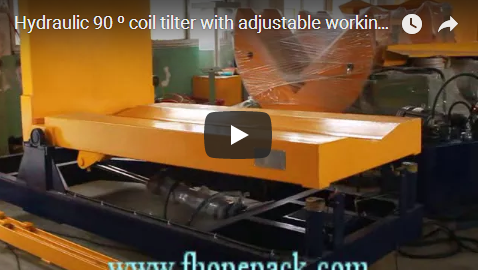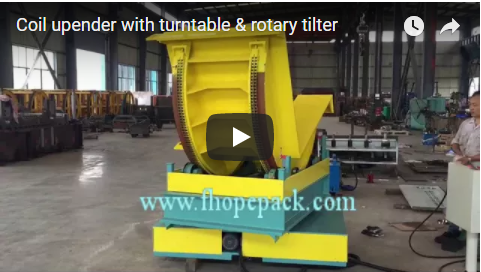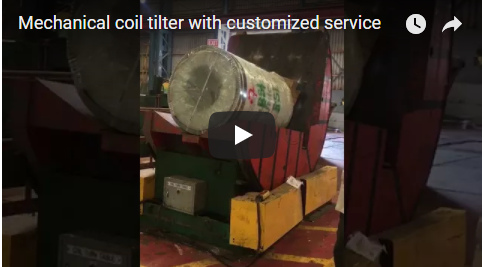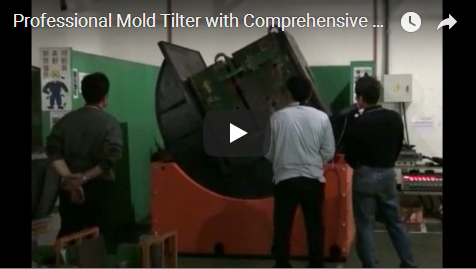Mastering Material Flow: A Deep Dive into FHOPE's Steel Sheet Inverter & Upender
Handling large, heavy steel sheets is a constant challenge in metal fabrication shops. Manual handling is not only labor-intensive but also poses significant safety risks and potential for material damage. Optimizing this part of the workflow is crucial for efficiency and profitability. FHOPE offers a specialized solution – the Steel Sheet Inverter & Upender – designed to tackle these challenges head-on.
Let's take a closer look at this equipment in action:
Moving and reorienting steel sheets, especially thicker gauges or larger formats, requires careful planning and robust equipment. Traditional methods involving cranes, slings, and manual effort can lead to:
- Safety Hazards: Increased risk of crush injuries, strains, and accidents.
- Material Damage: Scratches, dents, or warping during handling.
- Inefficiency: Significant time and manpower consumed in positioning sheets for the next process (e.g., feeding presses, lasers, or storage racks).
- Workflow Bottlenecks: Slow handling can stall downstream operations.
2. Introducing the FHOPE Solution: Automated Sheet Reorientation
The FHOPE Steel Sheet Inverter & Upender is engineered specifically to streamline the 90-degree or 180-degree rotation of steel sheets or stacks. It provides a controlled, automated method for flipping or upending material, integrating seamlessly into various production flows.
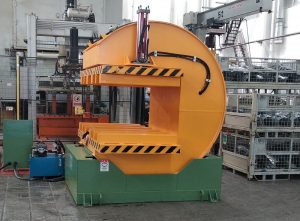
3. Key Features & Technical Specifications
While specific configurations can be tailored, the core design focuses on robustness and reliability. Key aspects typically include:
- Heavy-Duty Construction: Built to withstand demanding industrial environments and handle significant payloads.
- Powerful Hydraulic System: Ensures smooth, controlled, and precise rotation, minimizing shock and potential damage to the sheets.
- Variable Load Capacity: Machines are available to handle a range of sheet dimensions (length, width, thickness) and total stack weights. Specify your requirements for a tailored solution.
- Example Parameter: Max Load Weight: [Specify typical range, e.g., 2 tons - 15 tons]
- Example Parameter: Applicable Sheet Size: [Specify typical range, e.g., Up to 2500mm x 6000mm]
- Rotation Angle: Typically 90° (upending) or 180° (inverting).
- Control System: Options often range from simple push-button controls (semi-automatic) to fully integrated PLC systems for automated lines. Variable speed control allows for adjustment based on the load.
- Safety Features: May include safety guards, emergency stops, pressure relief valves, and secure clamping mechanisms.
- Customization: Options can include conveyor integration (infeed/outfeed), specific platform dimensions, and specialized control interfaces.
4. Operational Insights: A Smoother Workflow in Practice
From observing and discussing similar equipment in fabrication settings, the experience highlights several practical advantages:
- Loading: Sheets or stacks are typically loaded onto the machine platform via forklift or overhead crane. The platform design facilitates easy placement.
- The Rotation Cycle: Activating the machine initiates the hydraulic system. The movement is notably smooth and steady, avoiding jarring motions that could shift or damage the sheets. The entire cycle is relatively quick, often completed in under a minute, drastically reducing manual handling time.
- Unloading: Once rotated, the sheets are securely held in their new orientation, ready for pickup by material handling equipment for the next stage – whether it's feeding a cutting table, a press brake, or placement into vertical storage.
- Integration: In automated setups, these inverters/upenders act as key nodes, receiving material from one process and efficiently reorienting it for the next without manual intervention, significantly boosting throughput.
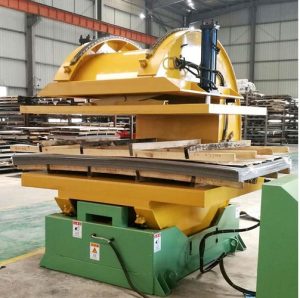
steel sheet pallet turning machine 5. Benefits Beyond Simple Rotation
Investing in a dedicated Steel Sheet Inverter & Upender delivers tangible benefits for fabricators:
- Enhanced Workplace Safety: Dramatically reduces the risks associated with manually flipping heavy, awkward sheets.
- Reduced Material Damage: Controlled hydraulic movement prevents the scratches, dents, and edge damage common with manual or less precise methods.
- Improved Productivity: Faster cycle times compared to manual methods free up labor and crane time for other value-added tasks.
- Optimized Floor Space: Facilitates different storage orientations (e.g., vertical storage) and efficient line feeding.
- Labor Cost Reduction: Minimizes the number of personnel required for sheet handling operations.
- Process Consistency: Ensures sheets are always handled and oriented in the same reliable manner.
6. Is the FHOPE Inverter & Upender Right for Your Operation?
Consider this equipment if your shop regularly handles steel sheets (or similar panel materials) and faces challenges related to:
- Frequent need to rotate sheets 90° or 180°.
- Safety concerns with current handling methods.
- Material damage during handling.
- Workflow bottlenecks caused by slow sheet reorientation.
- High labor costs associated with manual handling.
The FHOPE Steel Sheet Inverter & Upender represents a robust, efficient solution for modern metal fabrication challenges. By automating and controlling the critical process of sheet rotation, it enhances safety, protects valuable material, and contributes directly to a more productive and cost-effective workflow.
For more details on pallet and material inversion solutions, visit:
https://www.fhopepack.com/pallet-inverter/
Contact FHOPE for specific configurations and quoting:
info@fhopepack.com


